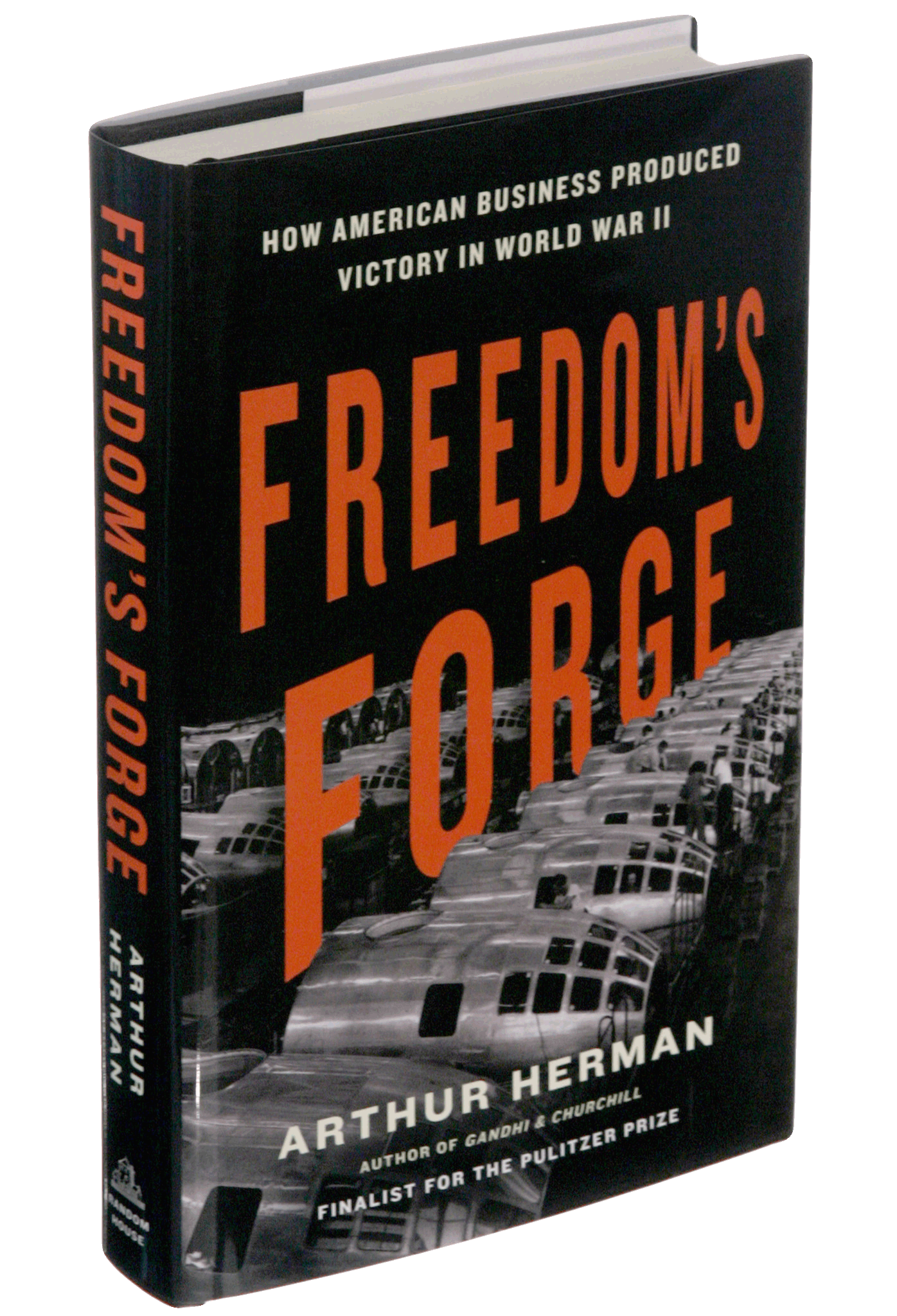I’m reading (listening to) this interesting book, Freedom’s Forge, about how U.S. industrialists were the driving force behind our victory in World War II.

During the decade following the Great Depression, government had defunded our military and defense contractors. Low consumer demand had left our industrial base depleted. However, in the late 1930s, with the threat of a German invasion of England—which would give Hitler the arsenal to mount a credible attack on the U.S.—Roosevelt began commandeering industrialists to help produce ever increasing amounts of materiel for our troops.
One key player in making all this happen was William Knudsen, who began his career under Henry Ford and helped Ford establish the company’s famous assembly line and mass production efforts. Knudsen then led the same efforts at General Motors, resulting in a dramatic turnaround in that company’s fortunes and productive capacity.
Under Knudsen’s guidance, the production of machine tools—tools used to build the parts needed to mass manufacture airplanes, tanks, ships and guns—tripled. The production of military aircraft went up 100x. The outcome defied warnings from experts who believed achieving even a fraction of this level of production to be impossible.
It’s evident that this type of effort, and result, would have never happened without a forcing function—in this case, an existential threat to the U.S. The book makes clear that we had no chance at winning the war without the might of our industrial leaders behind us. This is why Jeff Bezos, at an interview last month, said that “If big tech companies are going to turn their back on US Department of Defense, this country is going to be in trouble.”
Forcing functions are all around us: deadlines, competitions and races are all examples. The threat of the German nuclear program was a forcing function that led to the Einstein-Szilard letter to President Roosevelt and the creation of the Manhattan Project.
The series of DARPA Grand Challenges—the first of which was held in 2004—spurred autonomous car research and led to the creation of Waymo. Tesla has served as a forcing function to get other automakers serious about electric vehicles.
One of my favorite movies, Whiplash, has a great scene in which the conductor tells the story of how Jo Jones once threw a cymbal at Charlie Parker during a trial, humiliating him off stage. Parker practiced harder, and delivered a spectacular performance the following year; the rest is history....I am well aware of the shortcomings of the film and the inaccuracy of this story—the cymbal was thrown at Parker’s feet, not his head—but the fact that this was a forcing function stands.
In life, business and sport, we all need forcing functions. They help us rise to the challenge, galvanize a team, and get ever closer to achievement. They help us win the war.
